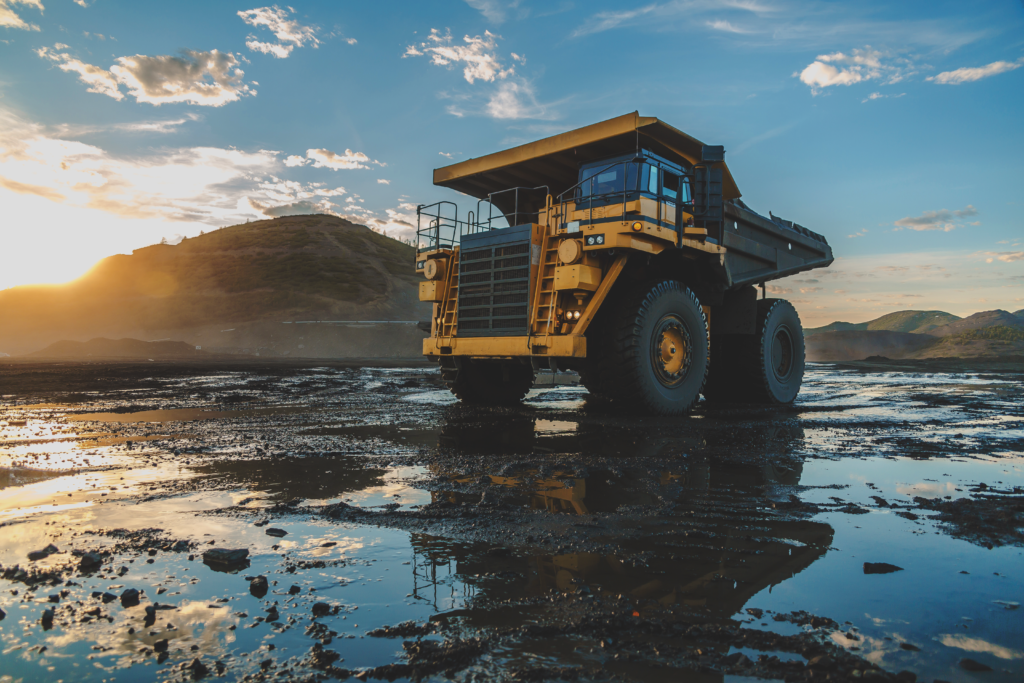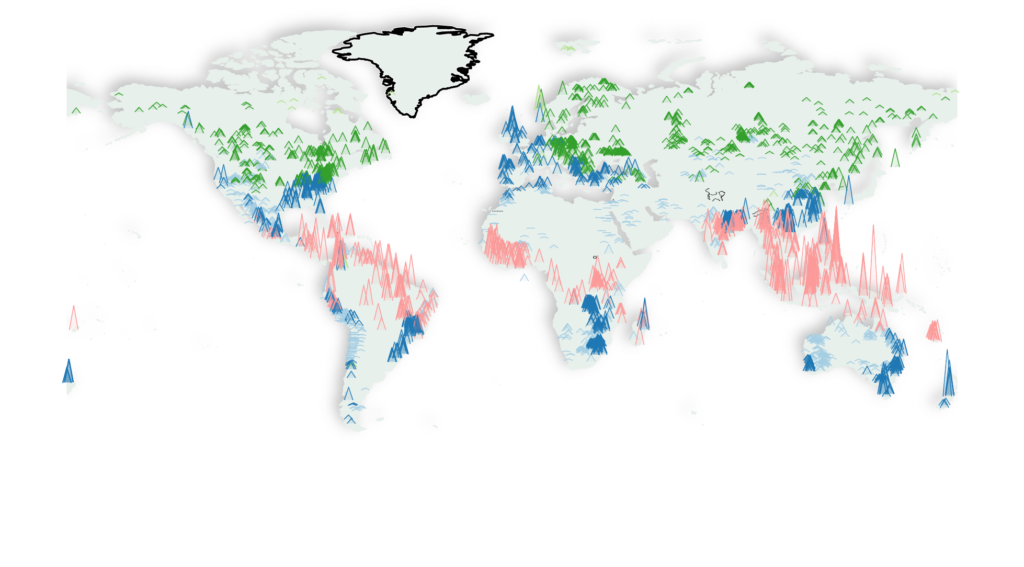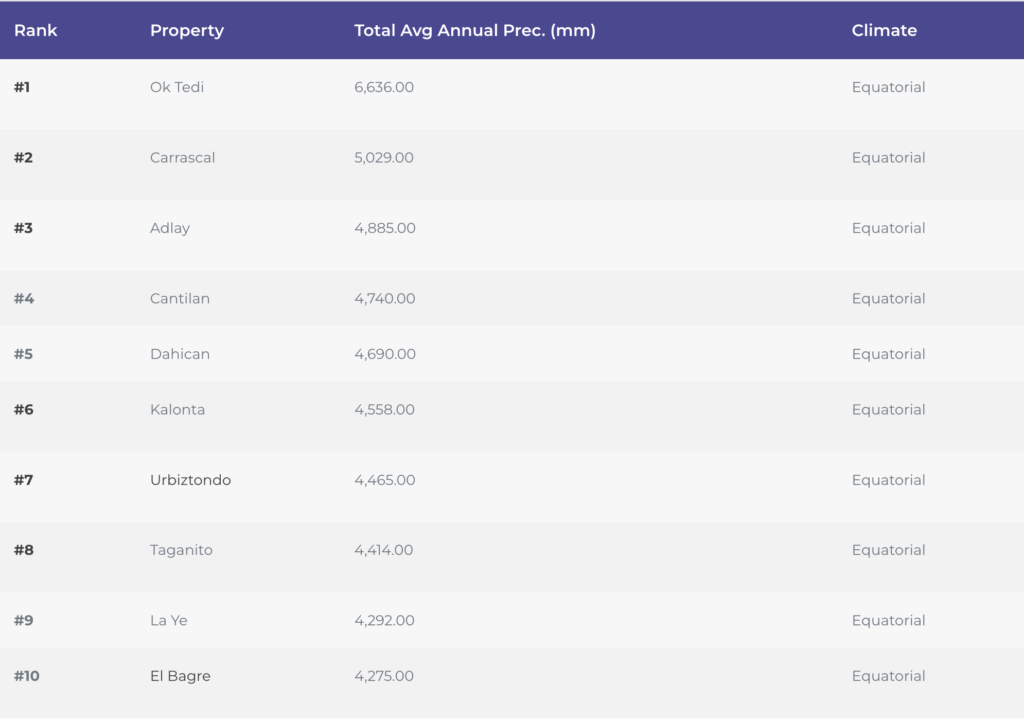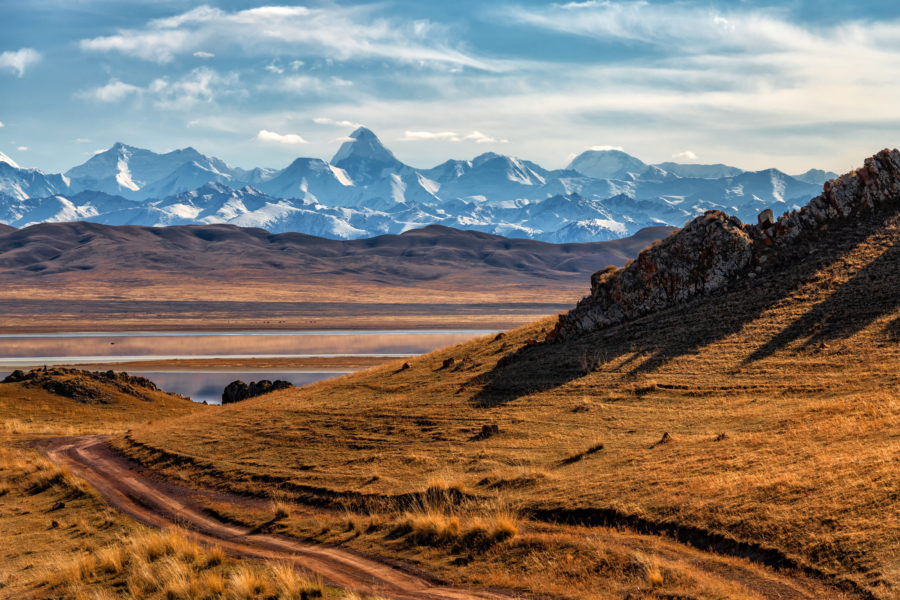The world’s wettest mines: Measuring precipitation at mine sites

The mining industry faces increasingly complex challenges from the weather, climate change, and a global push to become more sustainable. But mining is complicated, restricting operations can cost millions of dollars and needed supply of metals.
Weather and changing climatic conditions will affect mining operations and supporting infrastructure. As severe weather events continue to rise, companies and investors must consider the impact on equipment, employee safety, the availability of transportation routes, along with the price of water and energy supplies.
Mining Intelligence looked at the annual average precipitation from over 3500 in operation mine sites around the world to reveal the world’s wettest mines.
Making it rain: The world’s wettest mines
Average Annual Rain Fall at Mine Sites:


This data is for mine sites that are currently in production, including open, open-pit/underground, surface and underground operations.

Rain and Mining Operations
Mines and mining infrastructure are large and irreversible industrial projects with heavy capital expenditures, which are designed to operate for decades in challenging environments. Investors, engineers, and company management face an almost infinite variety of considerations and must balance the trade-offs between constructing lower risk designs and declining economic returns.
As a result, this means that planning is very important to secure the long-term technical and economic sustainability of mining investments. Mine plans and investment decisions should capture the type and kind of uncertainty that surrounds a mining project, and understand the precipitation of a mine location is one such risk.
The risks of heavy precipitation include:
- Land transportation route disruption
- Degradation of roads
- Disruption in delivery of input materials such as steel, timber, cement, hydrochloric acid, and cyanide, or consumables such as diesel, tires, and reagents
- Tailings dam failures
- Release of contaminated water into surrounding areas
- Remediation costs
- Increases in environmental liability
- Impacts on community health and safety
If heavy rainfall leads to flooding, then this can lead to operational disruptions, which include mine closure, washed-out roads, and unsafe water levels in tailing dams. Experts observed 10 percent annual production losses from wet weather at an open-pit coal mine.
Extreme weather also affects different commodities in different ways. For example, iron and zinc are the most exposed to flood occurrences, at 50% and 40% of global volume at risk, respectively.
Without this knowledge or data, many investors and those who make decisions are making decisions blind.
More data is here.
More News
Gold equities going under investors’ radar as metal continues to rise: Peter Schiff
One factor behind the undervaluation of gold mining stocks today is the inflation pressure from last year, says the gold bull.
April 03, 2025 | 02:50 pm
Kazakhstan says it has discovered 20 million ton rare earth metals deposit
If confirmed, the deposit would place Kazakhstan behind only China and Brazil by size of reserves.
April 03, 2025 | 01:40 pm
{{ commodity.name }}
{{ post.title }}
{{ post.excerpt }}
{{ post.date }}



Comments